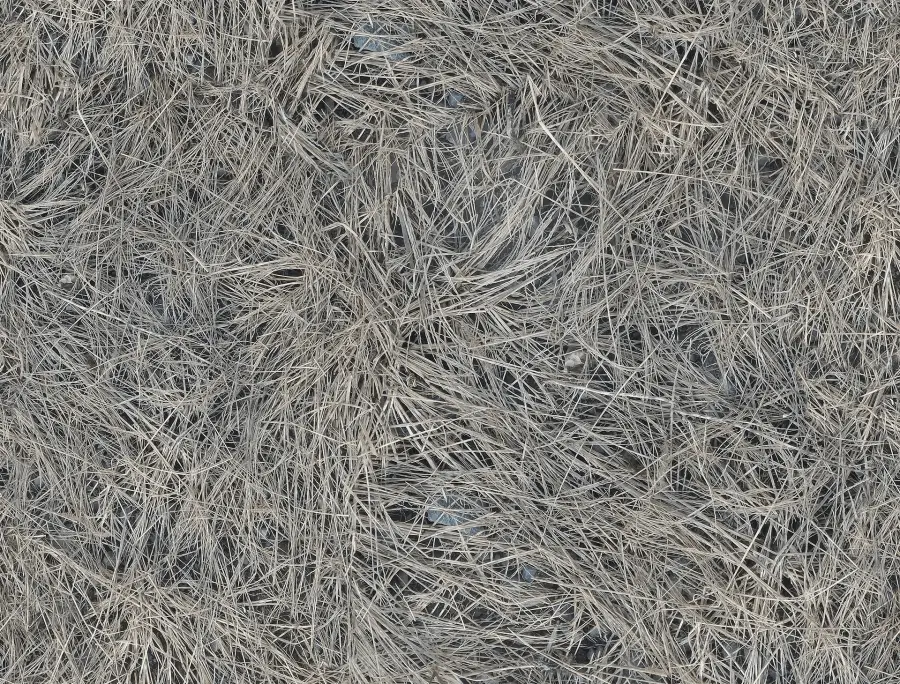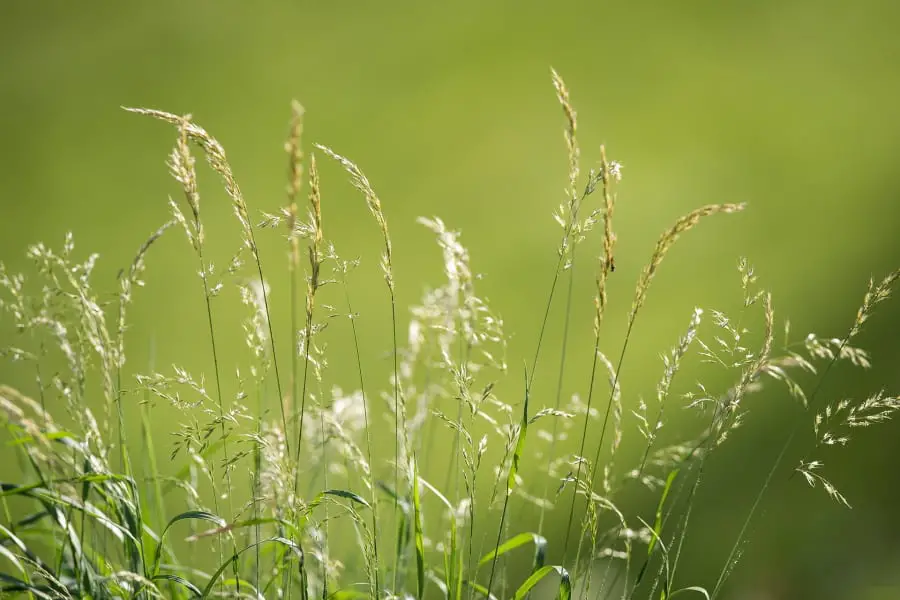There’s nothing like a full and lush lawn to really beautify your home. For some people, however, a full lawn seems like an unachievable dream because of an all-too-common issue…
Runner grasses like Bermuda will spread naturally to most bare spots. Tufted grasses like fescue will have to be planted from seeds. The soil may be compacted by excess traffic or effected by disease or pet urine. Underlying causes will need to be addressed in order for healthy grass to spread.
Yes, we’re talking about the dreaded lawn patch! In the following article, we will explore some of the causes of bare spots in your lawn, and the measures you can take to rectify them. Read to the end and you will be well on your way to owning the garden you’ve always wanted.

Contents
Will Grass Spread To Bald Spots Naturally In The Lawn?
It often seems as if the grass has a mind of its own, regardless of the time and effort you put into growing the perfect lawn.
The issue of patching is one of the most common imperfections DIY gardeners face. Many quickly lose hope because their grass grows to cover every inch of yard space…yet still leaves those spots as bare as Old Mother Hubbard’s lonely cupboard.
The good news is that your grass can spread to bare spots, depending on the kind you have. Tufted grasses produce many seeds that can be planted in the area and runner style grasses like Bermuda grass may invade the bald spots with stolons or Rhizomes before planting roots.
This can happen naturally on the part of the runner grasses or you may have to purposefully plant tufted style versions.
What is the difference in these two options? Let’s look at each.
How Do Tufted Grasses Spread?
You have your tufted grasses, that only grow vertically. These grasses quickly develop seed heads that will eventually be carried away by the wind to new spots for germination. Examples include Love grass, small-flowered Tickle grass, and Rhodes grass.
Tufted grass will not spread to a bare spot by itself. You will have to plant it there using grass seed.
How Do Runner Grasses Spread?
The other type of grass is known as runner grass. These grasses also grow vertically, but they have also evolved the ability to grow horizontally to “spread” themselves. Examples include Bermuda grass and Kentucky bluegrass.
Runner grasses use extending stems known as stolons to inch their way to unchartered soil. In a way, stolons are the grass’s “tentacles”, feeling their way across the ground surface as they seek a fresh nutrient source that will help the plant grow. When they reach viable soil, the stolons will take root and sprout new grass.
Some runner grass species, like Bermuda grass, also use underground stems known as Rhizomes. Rhizomes spread themselves out in multiple directions a few inches below the ground surface. Once they reach healthy soil, they curve upwards and emerge on the surface as new grass shoots.
If you want to be doubly sure that those tuff to cover areas take root, you can even seed in Bermuda grass. Here is a great and highly popular seed I suggest on Amazon.
Note: Before introducing Bermuda to new areas be warned of two things:
- Bermuda grass tends to take over
- Many Bermuda grass types change color to a dull green or light brown during some colder months
If this is a section away from your main yard or uniformity is secondary to coverage this could be a great solution. We have had many customers cover their entire lawns with this type of grass and loved the result.
If you liked this article, you will like these others on grass…
But Grass Won’t Grow In One Spot!
Fixing the bare spots on your lawn requires you to diagnose the specific problem first. You want to make sure that once you do fix the bare spot, it stays fixed.
Foot Traffic Causes Many Bare Spots
The number one reason for unwanted bare spots is traffic. No, we’re not talking about “traffic” in terms of an endless stream of cars en route to work, although parking a vehicle on your lawn could result in patching. Traffic, in this context, means people, animals, or vehicles constantly standing or traversing across similar areas of the lawn.
Since most people have driveways and garages, they rarely park their cars on the lawn. Therefore, human feet are the main form of traffic behind most grass patches. The best way to resolve this would be to avoid walking across the lawn to allow the grass to heal. If your yard’s current layout prevents this, you may have to install stepping stones or a designated path.
You could also install railings or a classic “KEEP OFF THE GRASS” sign so your guests can avoid trampling the delicate lawn.
Kid And Adult ‘Play’ Areas Prevent Grasses From Spreading
Perhaps you have kids who love roughhousing in the backyard. Unfortunately, this can lead to patching too. Maybe you could encourage them to engage in more physical activities at school, the local parks, or the beach. This may not always be possible, of course.
Disease And Fungus Slow The Spread Of Grass
Diseases and pests can also cause unsightly patches in your yard. To combat this, a chemical solution will be required. Make sure you pinpoint the specific pest or disease before getting and applying strong chemicals to your lawn. Have a lawn care professional help you out if you’re unsure.
Outdoor Grilling Can Certainly Cause Areas Of Sparse Grass
There are other miscellaneous reasons for a patchy lawn. If you have regular barbecues on the lawn, especially with charcoal grills, hot ash and charcoal may fall to the ground and kill the grass. A solution would be to move your grill to a paved surface.
Pets Could Be The Culprit For A Patchy Lawn
Pet urine is another silent grass killer. Dogs, especially, have high concentrations of nitrogen in their pee. If your dog loves peeing in the same part of the yard all the time, this may result in the gradual death of grass in that area. This problem is quite common in highly fertilized lawns that are already saturated with nitrogen.
While nitrogen is essential for healthy grass, too much of it will have an adverse effect. The solutions could range from not fertilizing the dog’s “spots”, training the dog to relieve him/herself in a certain area, or rinsing off the dog’s urine with water. You can also replace your current lawn with Fescue and Perennial Ryegrass, two species that are quite resistant to excessive nitrogen.
Find The Cause To Help Your Grass Spread
In order to fix the spots in your lawn you will need to know which of these causes or others are to blame. The solutions to helping healthy grass spread into the are lies in understanding the problem that cause the bare spot in the first place.
How To Make Grass Spread?

Once you’ve rooted out and eliminated the cause of the bare spots, it’s time to cover them up!
Time Is Usually What Runner Grasses Need To Spread
If you have a strong runner grass lawn, and the spots are small enough, then all you need to do is wait for the stolons and/or rhizomes to do their thing. If the bare patch is hardened soil, you could till it a bit to loosen it up for the spreading stems.
Bermuda grass is a good example of a grass that is not only hard to kill, but on the flip side easier to get into those hard to fill areas. One way to help it is to aerate and enrich the soil you want it to spread to.
Seeding Is A Main Way to Cover Bald Areas In A Lawn
In most other cases, though, you will have to replant the grass. We recommend going with the same kind of grass as the rest of your lawn. Some species of grass do not mix well, which can create a whole other set of problems.
Another thing you need to do is to determine whether you have a cool-season grass species or warm-season grass because they have different ideal planting times. Ideally, warm grasses should be planted in mid-to-late spring, while cool grasses should be planted in the fall.
How To Reseed A Bare Spot In Your Lawn
The first step to replanting is to till the bare spot to make it lose and breathable. Dig up to 6-8 inches deep, making sure to break up clumps of dirt. You should also introduce some fresh topsoil, which will boost the spot’s nutritional content.
Next, you should gently level out the new topsoil so it matches the surrounding ground surface. Use the back of a rake for this and make sure not to pack the soil tightly.
The next step is to plant grass seed or lawn products. Lawn product is good because it contains grass seed, fertilizer, and mulch in one convenient package. However, either choice is fine provided the grass seed is of the same species as your existing lawn. Gently scatter the seed or lawn product on the topsoil and, using a rake, gently cover the grass seed with a thin layer of topsoil.
Cover the spot with straw, which will serve as mulch and protection for the vulnerable seed. You can also use germination blankets to protect against soil erosion if rain is likely.
Once you’ve planted the seed, water the spot very carefully. You should water with a can rather than with a hose so you can have better control of the water stream.
From that point on, all you need to do is prevent the soil from drying out. This will make it easier for the seeds to take root. When shoots begin to emerge, add a little lawn fertilizer to give the grass an extra boost.
When the grass is fully established, maintain it as you would your regular lawn.
Final Touches On Spreading Grass To Bare Spots In Grass…
Those bare spots in your grass don’t stand a chance now. Use some of these tips and a bit of regular maintenance and you will have a uniform lawn in no time.
Just be sure to diagnose the original problem first so you can prevent it from happening again.
To read more about this amazing plant and its resilience, take a look at my other articles…
References
https://www.lowes.com/n/how-to/repair-bare-spots-in-your-lawn
